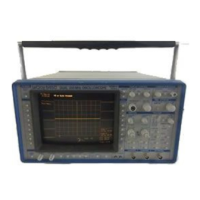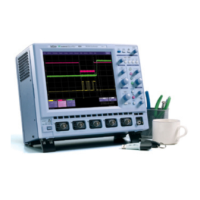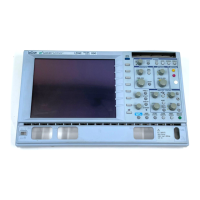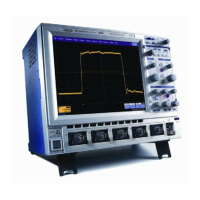Extrema may be performed over CHANNEL 1 or 2. FUNCTION F may also
generate extrema over FUNCTION E, therefore allowing extrema over
functions.
10.2.4 Arithmetic
The arithmetic waveform processing options consist of the basic
arithmetic functions performed on two source waveforms on a data point
per data point basis. Different vertical gains and offsets of the two
sources are automatically taken into account. However, both source
waveforms must have the same time base, and both must have either
INTERLEAVED OFF or INTERLEAVED ON. The trigger point may be different
in the two source waveforms, although such a case would usually give
results that are difficult to interpret.
The first source waveform may be multiplied by a constant factor in the
range .01 to 9.99 and be offset by an additional constant in the range
of ± 9.99 times the volts/division setting (of the first source
waveform).
10.2.5 Functions
This option consists of the following mathematical functions on single
waveform sources: negation, square, square root, integral and
differentiation. The first source waveform may be multiplied by a
constant factor in the range .01 to 9.99 and be offset by an additional
constant in the range of ± 9.99 times the volts/division setting (of
the first source waveform).
IO. 2.6 Smoothing
Five options are available: I-,3-,5-,7- and 9-point smoothing.
l-point smoothing consists of adding adjacent data points to each other
with equal weight. The data points of the source waveform are
considered as members of adjacent bins, each containing NI/N2 data
points. N1 is the number of data points in the source waveform whereas
N2 is the number of data points specified by the third line of the
setup menu. The data points within each bin are averaged, resulting in
a waveform consisting of N2 data points. For readout and display this
reduced record is then re-expanded to the original number of data
points by linear expansion.
WPOI Waveform Processing Option
10-6

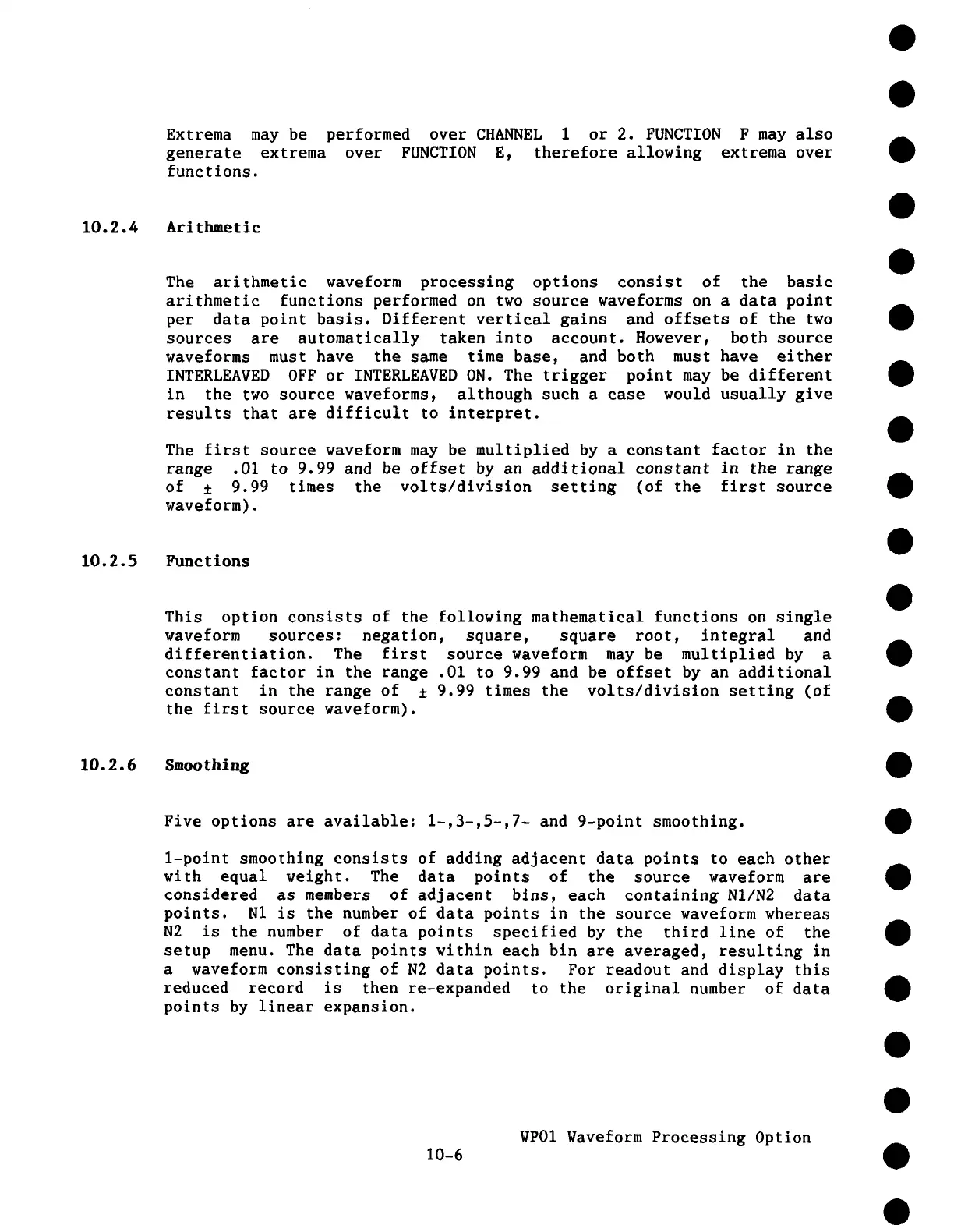